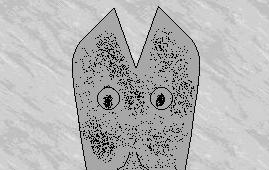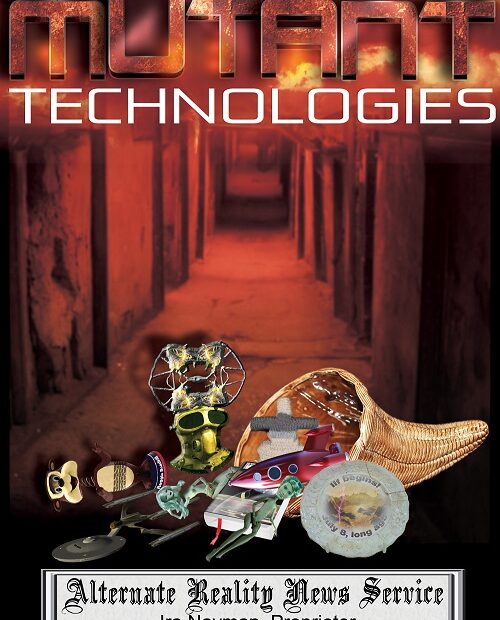by LAURIE NEIDERGAARDEN, Alternate Reality News Service Medical Writer
Chapdelaine Malteeser is a wreck. He has a purple rash on his left elbow and behind both his knees. He has Alter’s Echinastichesus – also known as “Wobbly Fingers” – a disease where the muscles in his fingers randomly stop working, a disease which has tragically ended the career of many a concert pianist and barroom thumb wrestler. His left eye twitches whenever anybody mentions Herbert Lom. He has Planter’s Whorl. His stomach periodically produces an enzyme that makes him crave pink flamingos (the lawn ornament, not the actual bird – he has destroyed many a pot in an attempt to make them edible).
Malteeser has found a clinical trial which promises a treatment for his condition, a condition which is a result of his involvement in a series of previous clinical trials, clinical trials which have left a stew of chemicals in his body, a stew of chemicals that are interacting in unexpected – and often, to use a technical medical term, gross – ways.
Phew! – made it out of that sentence alive!
The Amendola-Crisco Process (named after actor Tony Amendola and his favourite brand of shortening) takes anywhere from five days to three weeks to flush the chemicals out of a patient’s body. To ease withdrawal symptoms, the patient is jacked into a virtual world until she is declared chemical-free.
“In past trials, men have tended to gravitate to the virtual reality stitched together from scenes from Kevin James and Rob Schneider movies,” said Iolanthe Schweppes, Chief Medical Officer for drug giant Gangrenous Plasmids (GP). “I know these are times of diminished expectations, but it’s enough to make you weep. In a…detached, professional kind of way, of course.”
Schweppes added that women had no discernible pattern in their choice of virtual experience, although peanut butter did show up in a statistically significant number of them.
In its original trial, GP offered patients a virtual world that was a mirror of the real world, but that had to be discontinued when they found that patients began hallucinating that there was another world behind the virtual one, a world where machines harvested human beings for the energy their bodies produced. When the trial was over, these patients could no longer distinguish between reality and fantasy; the lawsuits over “alienation of affect” are still working their way through the courts.
Ironically, the trial – clinical, not legal – for the Amendola-Crisco Process is already oversubscribed, making it unlikely that Malteeser will get in.
“Yeah, sucks to be him,” said Estrella Goomy-Baer, one of the trial subjects. What were the symptoms that made her eligible? “I…have a cough…” she stated. “Ahew. See? I’m definitely sick. And…and…and…oh, look! My right earlobe just fell off! Umm…okay, it didn’t actually fall off, but see? That’s an odd angle for an earlobe to hang, isn’t it? It feels like it’s about to fall off! Oh, and my atrial…spleen feels bloated, and it’s not even my time of the month!”
“She’s faking!” Malteeser accused. When I asked him how he could be so sure, he replied, “Because that’s what I sounded like when I faked my way into clinical trials!”
“I’m sure that if Mister Malteseer thought about it a little further,” commented Ebenezer Cadbury, who recruits subjects for medical clinical trials, “he would realize that he was admitting to FRAUD and everybody knows that FRAUD is a CRIME, so that would be A REALLY BAD IDEA.”
“Well, yeah,” Malteeser backtracked. “There’s that.”
Are patients signing up for medical treatment trials who do not have the diseases tested for a problem? Schweppes thinks so. “We had one guy show up for a test of a brain seizure medication,” Schweppes claimed, “who actually suffered from a hangnail!”
“To be fair,” Cadbury responded, “the pain from his hangnail was so intense, he felt like he was having a brain seizure!”
Schweppes claimed that one of the patients for a trial of an anti-psychotic drug turned out, in fact, to be an emperor penguin.
“To be fair,” Cadbury insisted, “I thought he was a small person in a tuxedo! It was an honest mistake.”
Schweppes claimed that the fact that Cadbury was earning $30,000 to $50,000 for each person he recruited for a medical therapy trial might be affecting his judgment about appropriate test subjects.
“To be fair,” Cadbury started. Five minutes later, he finally added, “At that rate, it is going to take me a long time to become a billionaire!”
“It’s just as well,” Malteeser sighed. “With my luck, I probably would have ended up in the placebo group!” Then, he watched his right earlobe fall off.


